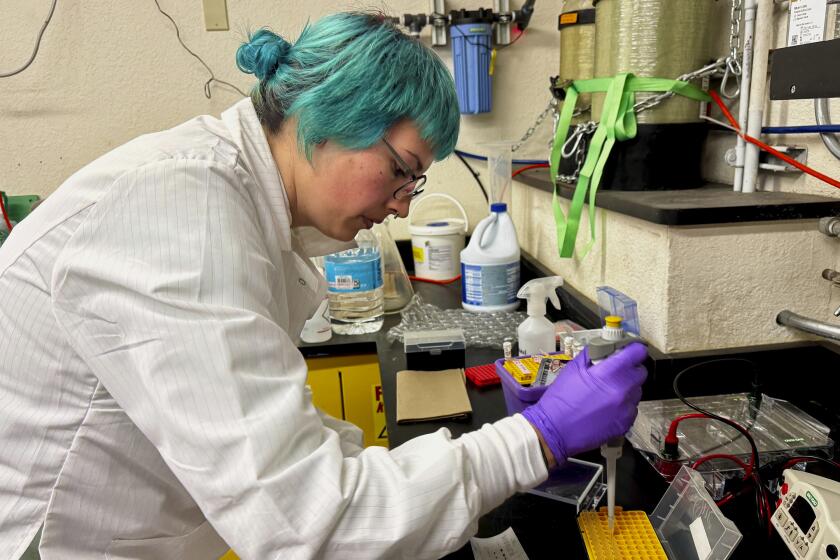Why Johnny and Sally Can’t Run
- Share via
Our children are in terrible physical shape. Recent news accounts about a study of more than 10,000 students, age 6 through 17, demonstrate just how terrible.
The study, conducted by the Amateur Athletic Union, found that our children have little heart or lung endurance, absurdly limited muscle flexibility, no muscle tone to speak of and weigh far too much. Nearly half the students studied could not even reach a “satisfactory” level of performance while doing sit-ups, running or stretching.
In the last 10 years, our children have grown heavier, slower, weaker and, most significantly, less healthy. Like all educational problems, the trend toward unfitness points to a bleak future, one in which health-care costs will grow even more monstrous than they are now.
It is not hard to trace the path that led our children to this dangerously unfit state. First and foremost, they don’t move much. Barely one-third of our children are required to take part in any daily exercise at school. That is the result of many factors: We place far too much emphasis on competitive athletics; education budgets have grown smaller; video games have replaced active games.
Whatever the reasons for the decline in required exercise, it is time to reverse the trend and require every student to take part in a fitness program. And this time, we should do it right.
My staff and I have been fortunate to work with many very gifted student athletes who want to compete and happily work to develop their gifts. When we visit school health fairs, however, we see the rest of the student population--children who are horribly out of shape, ill informed and under-motivated. It is heartbreaking. Worse, it is a waste of the children themselves, who ought to be learning to use their bodies skillfully.
To make these children fit, and to motivate them, we must change our view of physical education. It must become fitness education, in which everyone participates, nutrition is part of the course and competition is the least important value. No child should endure the pain and anxiety of being the “last one picked,” because in a program dedicated to fitness and health, everyone gets picked and everyone participates.
There is no excuse for denying our children this opportunity. No school system is so poor that it cannot organize, at minimum, a 20-minute walking test for every student every day. When that walk begins to produce stronger hearts and lungs, there are very inexpensive ways to bring the muscles up to par, too. Bags of rice make excellent training weights, two kids at each end of a strong rope can create a balanced isometric exercise, and push-ups and sit-ups don’t require any equipment at all. Parents can support the program by learning more from booklets, from groups such as the AAU and from the President’s Council on Physical Fitness.
School leaders must help, too. By recognizing that a broad-based education includes fitness, they can make it a priority. By learning more about the newest developments in the field, they can direct better programs.
My staff and I have recently finished a 5-year study of strength norms in women which taught us that it is possible to structure individualized fitness programs for every female student simply by grouping them by height and weight. A wealth of such information is out there, available for dedicated educators to review.
The business community, which has long been a loud critic of the school systems that serve as its major personnel resource--should join the effort, too. Some business leaders already know that a company fitness program increases productivity, lowers health-insurance costs and greatly reduces absenteeism and turnover. Imagine the greater benefits of a work force that arrives for its first day on the job already fit and healthy. To help create that work force, business can develop programs, fund equipment where it is needed, sponsor fitness award programs and work with parents and schools.
We can see all around us the results of the failure of traditional physical education. The only question is how, and how quickly, we are prepared to do something about it. If we don’t do something, our children will be too tired, too ill and too lazy to reach for the success their future may hold.






